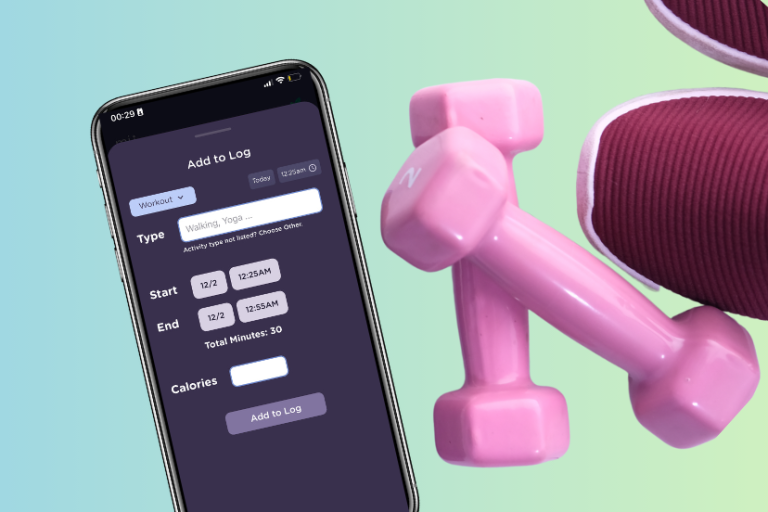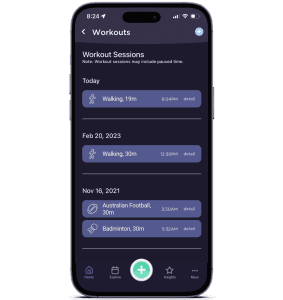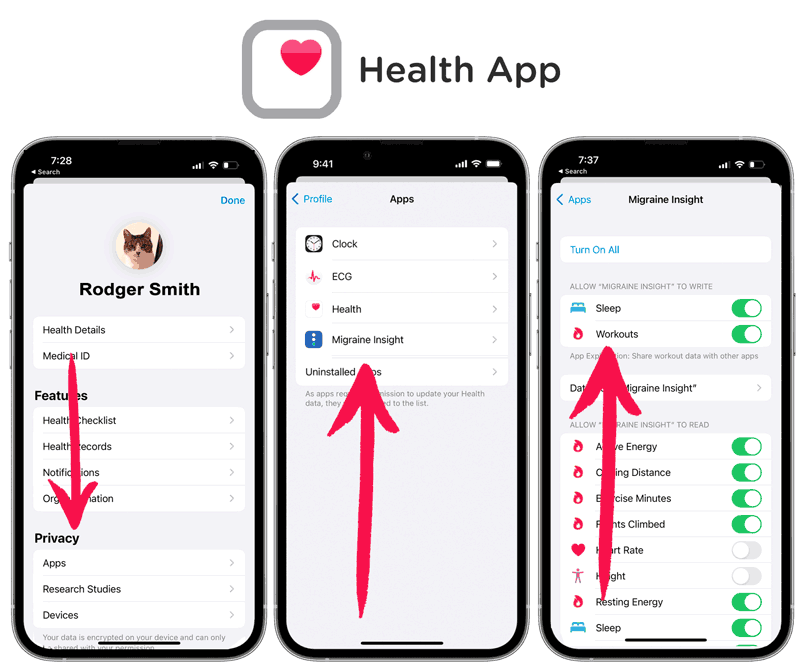Tracking Workouts in Migraine Insight
Working out can cause migraines and help keep migraines at bay. For some people, it does both depending trigger factors.
Here’s a guide to figuring out how to exercise with a headache disorder.

Tracking your workouts can provide key insights on your journey to more migraine-free days.
In this guide:
- What does the research say?
- Tracking with Migraine Insight: Any fitness tracker that works with Apple’s Health App or Android’s Google Fit works. No tracker? You can enter workouts directly in the app, too.
- Need help setting up? See our troubleshooting guide.
- Workout Tracking FAQs.
Exercise and Migraines – What does the research say?
In one study, regular exercise reduced migraines. In one randomized, controlled trial of 91 patients compared exercising for 40 minutes three times a week, relaxation, and daily topiramate use. Each method was effective. And, no significant difference was observed between the groups. The study concluded that – “Exercise may be an option for the prophylactic treatment of migraine in patients who do not benefit from or do not want to take daily medication.”
From: “Exercise as migraine prophylaxis: a randomized study using relaxation and topiramate as controls.”
In one study, low exercise was associated with a 60% higher risk of developing a migraine. Lebedeva et al. performed a large population study, including 3,124 subjects (43% women) who were interviewed with the purpose of identifying potential lifestyle factors associated with the risk of developing migraine (11). In multivariate logistic regression analysis, low physical exercise (i.e., <30 min of physical exercise per week) was associated with a 60% higher risk of developing migraine (OR, 1.6; 95% CI, 1.0–2.4). Notably, this association was found to be statistically significant in women (OR, 1.9; 95% CI, 1.1–3.2) but not in men (OR, 1.2; 95% CI, 0.6–2.6).
Source: ATM Article
Another study showed that regular exercise reduced migraines and improved quality of life overall. Interesting findings emerged from a recent intervention study, in which 52 migraine patients were equally randomized into an exercise group (i.e., 45 min of aerobic exercise 3 times weekly for 3 months) and a control group (i.e., usual daily activities, no aerobic physical exercise) (22). After the end of the study and during 6 months of follow-up, the aerobic exercise group displayed a substantial improvement of all the main migraine features, i.e., reduction of days with migraine (−23% versus both pre-exercise and control group), pain intensity (−16% versus pre-exercise and −8% versus control group) and pain duration (−28% versus pre-exercise, no difference with control group). Even more importantly, the quality of life of the exercise group was substantially improved during follow-up, as shown by a remarkable increase in the time spent on household chores (+32%), paid work or study tasks (+46%), social activities (+31%), family life (+33%), and physical exercise (+17%).
Source: ATM Article
Knowing how working out affects your migraines can be a big part of finally finding your real migraine triggers
Troubleshooting
If your data isn’t loading, make sure you have location permissions turned on.
In order for your phone to access weather information, you need to have location permissions turned on.
How to Set Apple Location Permissions
Open the Health app. In the Summary tab, tap your profile picture in the upper-right corner. Under Privacy, tap Apps.
Here’s a Guide from Apple.
Workout Tracking FAQ
What if a tracker session is missing?
The best thing to do is open Apple Health (or, Google Fit on Android). And, enter the information there. You can also enter it in the workout log in Migraine Insight. To get there, from the home screen, tap the top right icon to open the Logs. Open the Workout Log. Tap the green plus icon to add a session.
Manual Tracking – Can you enter workouts yourself?
You can enter your workouts in the app.
As always, the information provided in our blog is for educational purposes only. No health blog is a substitute for professional medical advice.





